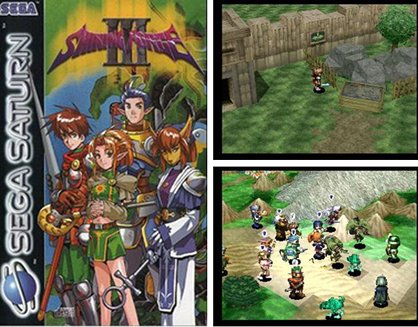Golden Sun: an introduction
We delve deep into the series to see why the upcoming sequel is worth your time
It's real purty
They might not look too badass now, but the Golden Sun games were perhaps the two best-looking titles the GBA ever saw. Maybe that’s because Golden Sun was originally planned as an N64 game, and the developers wanted to keep the graphics bar as high as they could. Or maybe it’s because they just knew the system better than anybody else. Either way, it looked fantastic then and still holds up now.

All the people inhabiting the world of Weyard are pseudo-3D piles of pixels, ably giving the game a three-dimensional look . The overworld and each town take advantage of the GBA’s wide color palette, giving the game a depth that hides its flat actuality. But the real graphical showcases are the battles. Not only would the camera pan around between the heroes and enemies, but the magical spells, and especially the summons, were spellbinding.
Above: A collection of the summons from the second game
That was as good as it got on the GBA way back in 2003. And after seeing how much Camelot could squeeze out of what was basically a portable SNES, it makes us eager beavers to see what they can do with a DS.
Fun Fact: The world is flat!
Yes, the land of Weyard, with its many shifting continents, is a flat world. Like a disk, all the water on it just falls off the sides as it coasts through space. This revelation halfway through the second game made our heads spin, as we had foolishly assumed the world was round. Somewhere, those who doubted Columbus were laughing.
Sign up to the GamesRadar+ Newsletter
Weekly digests, tales from the communities you love, and more

Above: The map from the Japanese version
A fine pedigree
For Nintendo fans, developer Camelot is mostly associated with Mario Golf and Tennis, while older Sony fans may remember it perfected its swing with the first Hot Shots Golf. Seeing its name on an RPG seems a poor fit, but long before it became a maker of addictive and arcade-y sports games, Camelot was the top RPG development house for Sega.

Above: Humble beginnings
Though Phantasy Star has a deserved place as the premier Sega RPG series, the Shining series wasn't far behind. Whether it was the series’ first, traditional RPG Shining in the Darkness, the Zelda-eque Shining Wisdom or the amazing strategy sub-series Shining Force, they were all big for their time. And they were all made for Sega systems, up until the last days of Saturn, by Sonic! Software Planning, which later became Camelot Software Planning.

Above: One of the most criminally underplayed games ever
Even after splitting from Sega, the development house focused on the Shining games until Sega pulled the plug on the Saturn right as Camelot was wrapping up its masterpiece in three parts, Shining Force III. America and Europe only got part one, though Japan did get the full story. After that, Camelot sided with Nintendo to make some fantastic Mario sports games, but after a couple years it returned to RPGs, and Golden Sun in particular. And now, after a six-year break, it's at last returning to the genre it knows so well.
Fun Fact: Camelot still functions
When Golden Sun DS was announced, we were immediately curious to know if Camelot was going to develop it. We had our doubts, because the developer released only one game in the last four years: We Love Golf! on Wii. Most troubling for Camelot's future with Nintendo was that We Love Golf! had Capcom as its publisher, and played like a lesser, reskinned version of Mario Golf. But confirmation quickly came through that Camelot was at the reins of Golden Sun once again, so we're pleasantly surprised to see the company back on track with Nintendo.

Above: PerhapsCamelot's darkest hour
Henry Gilbert is a former GamesRadar+ Editor, having spent seven years at the site helping to navigate our readers through the PS3 and Xbox 360 generation. Henry is now following another passion of his besides video games, working as the producer and podcast cohost of the popular Talking Simpsons and What a Cartoon podcasts.



